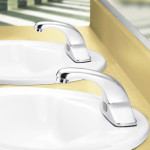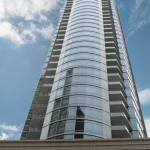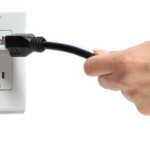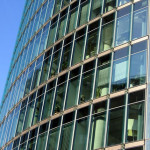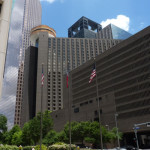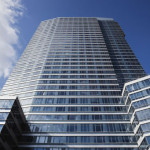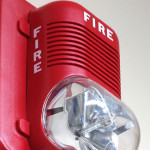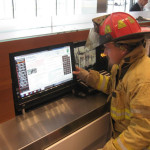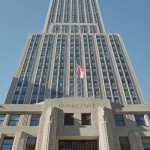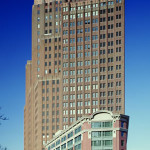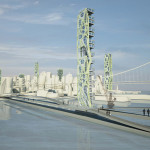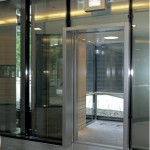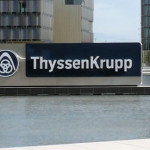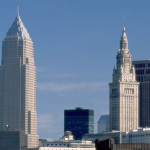Sasha Bailey, LEED AP BD+C |
January 1, 2013
With an ever increasing emphasis on green building practices globally, many building owners, facilities managers, engineers and architects are seeking ways to reduce the environmental impact of existing elevators by exploring innovative sustainable service solutions. Among the environmental challenges are energy efficiency, indoor air quality and oil requirements. In response, experienced technicians and engineers can recommend cost-effective sustainable products and practices that help to achieve reductions in material use, energy and waste.
The following sustainable solutions can be implemented to increase energy efficiency, reduce toxins, eliminate unnecessary waste and extend the life cycle of an elevator.
Sustainable Solutions for Traction Elevators
Upgrading the Motor
Upgrading from a motor-generator (MG) drive to a variable-voltage variable frequency (VVVF) drive could save approximately 40 percent on energy consumption, depending on the elevator type and size. Because of required power conversion, MG sets require one motor to run solely as a generator to power another hoisting motor. More current technology, like VVVF drives, have eliminated the need for this unnecessary redundancy, thus greatly reducing the amount of energy needed to power elevators. Moving away from the old MG sets also eliminates potential indoor air quality issues associated with carbon dust created by the use of carbon brushes in the motors themselves and waste heat.
Regenerative Drives
Building owners can implement technical advances, like installing regenerative drives, which revert some of the elevator’s unused energy back into the building. The power that is transferred back into the building would traditionally be dissipated via heat into the machine room. With the regenerative drive, the excess energy is captured and reused, and the system reduces costly traditional cooling of the elevator machine room. Building owners, facilities managers, elevator consultants and architects can utilize energy calculators to help customers identify estimates of energy savings from regenerative options.
Destination Control Software
Installing destination control software can create more efficient passenger transportation, ultimately improving building efficiency – not to mention the “cool” factor – which can increase the building’s overall property value. Destination control software improves routing by grouping elevators by the floor the passengers intend to travel to in a building.
Buttons are not required inside each elevator car because passengers designate which floor they are traveling to using a centralized screen input system in the building’s lobby. The touch screen directs passengers to their designated elevator as determined by a formula that considers requested destinations and estimated time to destination. Riders are evenly dispersed to their appropriate elevators. The destination control software groups all passengers traveling to the same floor in the same cab, reducing the number of stops and improving the elevator’s efficiency. This practice can increase handling capacity up to 30 percent. Systems equipped with destination control software also allow building owners to accommodate tenants with high-traffic needs during peak travel times of the day.
Sustainable Solutions for Hydraulic Elevators
Readily Biodegradable Oil
Recently developed canola-based hydraulic oil represents the most environmentally preferable hydraulic option available today. It differs from traditional soy-based hydraulic oils, which are typically 50 percent vegetable-based with synthetics added to compensate for deficiencies. It has a more stable viscosity throughout its heat range, requiring less valve adjustments in extreme temperatures and may eliminate the need for a viscosity control device which requires energy in order to keep the oil fluid and avoid thickening. Traditionally, a viscosity control device is required to keep an elevator’s oil at its optimum operating temperature around the clock, even when the elevator is not in use. Eliminating the need for this device reduces the amount of electricity a building’s elevator is consuming. By replacing existing petroleum-based oil with this product, a system’s lubricity, which will allow an elevator to be maintained at peak-operating performance and make the system more environmentally preferable, can be rejuvenated.
Power Units & Valves
Another improvement in hydraulic elevator technology can be achieved through the updating of power units. Normal wear and tear on older pump units means seals can begin to leak or valves might not seal tightly, permitting system pressure to decrease over time. Decreased pressure requires the unit to unnecessarily power-up in order to re-level, even in off-peak hours. Constant leveling throughout a unit’s downtime can mean unnecessary use of electricity for the building owner and more wear and tear on the seals and pump parts.
Sustainable Solutions for All Elevator Types
LED Lighting
Installing light-emitting diodes (LEDs) can reduce energy costs by up to 80 percent, as well as dramatically cutting down on the number of bulbs that owners need to replace each year. Typically, LED lights last up to 10 years. The choice to move to LED can reduce heat loss typical in other lighting options and disposal issues common with other mercury containing bulbs. It also increases the life span, in some cases up to 10 years per light. Finally, LEDs do not emit the ultraviolet light that is common in other bulbs, which can cause fading to elevator cab interiors over time.
Econolight™
Based on Life Cycle Analysis, it is common knowledge that an elevator’s largest environmental footprint comes from the energy used during its use phase and most of that phase is spent sitting idle. Programming the elevator controller to shut off the elevator’s lights and fan when the cab meets certain parameters will increase energy savings. Econolight is a sustainable solution that eliminates approximately 60 percent of wasted energy in an idle elevator. For instance, if the elevator is stopped on the lobby floor and has not been used within a certain time frame, the elevator system would be programmed to shut off the cab’s lights and fans. With Econolight, energy use could go from 24 hours a day to less than 9.5 hours a day, reducing CO2 emissions by 193,000 tons per year.
Features and Benefits:
- Easy and quick to install (less than two hours)
- Conserves energy
- Increases the value of the elevator and building
- Saves money due to fewer bulb replacements
- Five-year or less payback period in energy savings
- Cabs are cooler when lighting has been off between service calls
Solid-State Starters
A solid-state starter supplies a motor with smooth and steady current, eliminating the large influx of current typically created by older mechanical starters. When energized, conventional motors create power surges or spikes. These spikes may be noticed by momentary dimming of the lights in the cab and may hamper optimal performance of sensitive equipment, such as computer equipment. This sustainable solution also provides savings because the starters reduce spikes, which utility companies may bill at higher rates.
Features and benefits:
- No starter contacts used during normal operation
- Less severe starting
- No light flicker or spikes that can interfere with a building’s equipment
- Reduced stress on the motor windings
- Prolonged motor life
- Quieter operation
- Battery Lowering
Battery lowering ensures that, in the case of an emergency, all elevators are lowered to the nearest point of egress, thereby avoiding entrapment. Battery lowering also reduces the demand on a building’s back-up generator permitting reduced energy demand in an emergency. This can reduce the need to include elevator systems, while sizing the building’s back-up generator and represents an efficient use of resources.
Conclusion
The largest impact the industry can have on energy reduction is through the modernization of outdated and energy-inefficient technology, one building at a time. According to the USGBC, buildings are using approximately 71 percent of all electricity in the United States. Finding means to reduce this usage is paramount to sustained operations. Because older elevators consume up to 2 to 3 percent of all electricity globally, it has become increasingly important for companies to provide best-in-class sustainable solutions that reduce customers’ environmental impacts and operating costs.
In ThyssenKrupp Elevator Americas’ 2009/2010 Corporate Sustainability Report, the opportunity for energy and emissions reductions was outlined for drives, lighting and fans with potential energy savings ranging from 50 to 94 percent for each element. It is estimated that regenerative drives, in particular, reduce 3,800 pounds of greenhouse gas emissions per year per elevator. The reduction can be substantial for customers who are measuring, documenting and reporting the CO2 footprint of their building portfolio. By choosing sustainable service solutions, building owners benefit both building occupants and the environment.
Sasha Bailey, LEED AP BD+C
Sasha Bailey, LEED AP BD+C is the Strategic Communications Manager for ThyssenKrupp Elevator Americas. Email her at [email protected]. ThyssenKrupp Elevator Americas has been involved with some of the highest profile high rises in North America, including One World Trade Center in New York, Toronto's Shangri-La Hotel, and the Great American Tower (Cincinnati's tallest building), among others.
Tags: elevators, ThyssenKrupp
Category: Sustainable High-Rise, Vertical Transportation







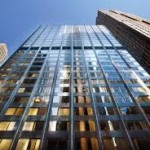





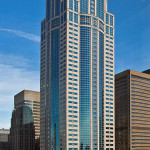
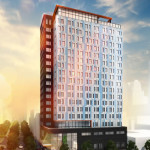


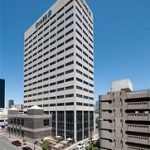







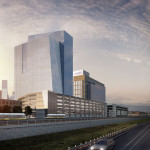












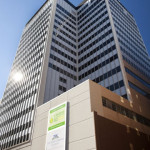



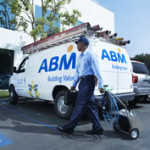

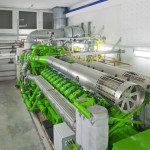



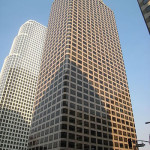

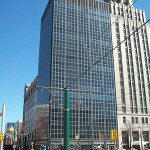


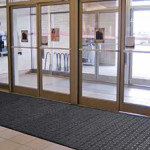
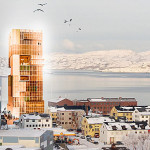
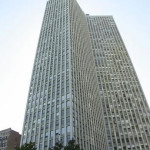


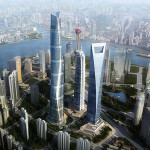





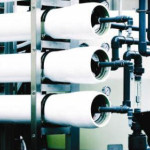


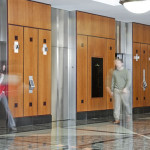
 An award winning editor, Leah spent over eight years in senior
editorial positions at both BUILDINGS magazine and ARCHI-TECH
magazine. Her work has been incorporated into training and
educational programs around the country. She is a graduate of
University of Iowa. She is Editor at Large for High Rise Facilities.
An award winning editor, Leah spent over eight years in senior
editorial positions at both BUILDINGS magazine and ARCHI-TECH
magazine. Her work has been incorporated into training and
educational programs around the country. She is a graduate of
University of Iowa. She is Editor at Large for High Rise Facilities.


